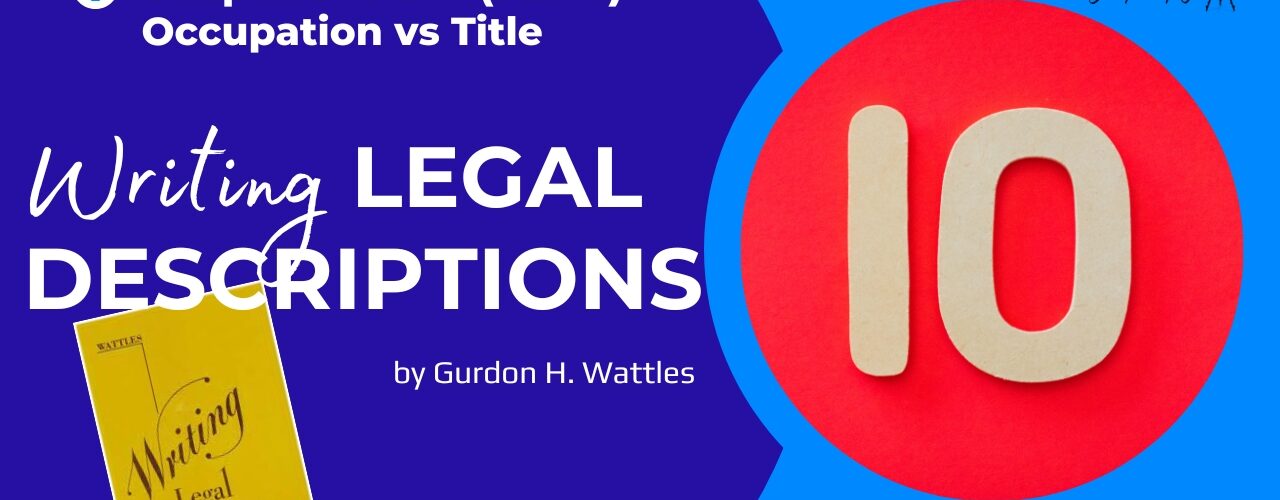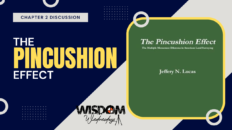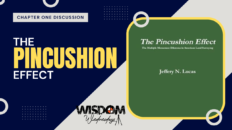Wisdom Wednesdays for the land surveying profession is a bi-weekly roundtable discussion to go over a chapter at a time from our “Surveying Bibles.” The goal is for everyone to read a chapter of a book and then have a roundtable discussion about that chapter. The current book being discussed is Writing Legal Descriptions by Gurdon H. Wattles.
| Summary | |
| Discussing PIN Cushion Topics and Collaboration | |
| The team discussed potential topics for their upcoming “PIN cushion” virtual discussion. Trent proposed sharing a PDF of “Evidence of Procedures, the seventh edition” for the discussion, as it was the book they started with Nettleman and had a lot of input. Kyle suggested that it would make a good audio book and Trent agreed, hinting at the potential for Lucas to record it. The team also discussed their previous discussions and off-camera interactions, highlighting the value of their email communication. | |
| Skeleton Book PDF and GPS Repeatability | |
| The team discussed the location and accessibility of a PDF document concerning the ‘Skeleton’ book, with Trent, Kyle, and Joey confirming its copyright status and the potential challenges involved in tracking down the publishing rights. The team also discussed the repeatability of GPS readings, with Trent and Kyle estimating half to quarter inch repeatability over short distances. James showed interest in exploring angular ship correction and repeatability in greater detail, and the team tackled potential errors in their procedure. Trent acknowledged James’ concerns about horizontal distance separation over angular discrepancies and confirmed that these issues have significantly improved since the early days of GPS. | |
| Boundary Surveying Challenges and Solutions | |
| Trent Keenan led a discussion on the challenges and expectations of boundary surveying, particularly in relation to the concept of “occupation versus title.” Trent, along with Nick, James, and David Bush, emphasized the need for surveyors to document all evidence and provide a clear, professional opinion of the boundary line. The team also discussed the potential for disagreements and the necessity to record any lack of harmony. The idea of low projections to minimize errors was raised, but it was noted that not all states would implement this. | |
| Surveying, Ownership Boundaries, and Legal Principles | |
| James and Trent discussed the role of surveying in determining ownership boundaries and the importance of understanding legal principles in this context. Trent elaborated on the concepts of legal title, record title, and equitable title, and their significance in property ownership. He also highlighted the need for surveyors to provide informed information to clients to aid their decision-making. The discussion touched on Utah’s state laws regarding acquiescence and the necessity of a boundary line agreement before recording it at the county recorder’s office. Finally, Trent sought input from other areas, specifically California, on their approach to acquiescence and any codified acquiescence laws. | |
| Boundary Line Agreements and Acquiescence | |
| The team discussed the concept of boundary line agreements and acquiescence in land disputes. Kyle clarified that these agreements are rare and come into play when the location of a boundary is uncertain, with both parties agreeing to a temporary line. James highlighted that in Arkansas, acquiescence may be used as a last resort when there’s no survey, monuments, or legitimate boundary line agreement. Trent Williams discussed the concept in Utah, stating that such agreements often arise when the deed line and the physical boundary line do not match. Jon suggested a more conciliatory approach, recommending that property owners engage in discussion with their neighbors to resolve boundary disputes. The team agreed that boundary line agreements are only applicable in cases of controversy over the placement of a boundary line. | |
| Navigating Unknown Boundary Lines and Adverse Possession | |
| The group discussed the challenges and considerations in establishing legitimate boundary line agreements when the boundary line is unknown. Nick suggested a cautious approach when dealing with improvements that don’t fit the record lines, emphasizing the importance of understanding the client’s knowledge of the boundaries before making assumptions. The group also explored the influence of John Stall, a certified mediator, on Utah law and his role in shaping the state’s statutes on boundary line adjustments. Trent pointed out the challenges adverse possession laws present for surveyors and landowners, and urged guiding clients towards other solutions. The group agreed on steering clients away from legal title questions, emphasizing their role in documenting a record title and location, rather than making decisions about adverse possession or acquiescence. Trent Williams highlighted the approach to boundary disputes in Utah, stressing the importance of avoiding litigation through mediation and agreements between landowners. | |
| Surveyors, Engineers, and Legal Document Preparation | |
| Trent Williams led a discussion on the role of surveyors and engineers in preparing legal documents, focusing on the potential issues and the importance of collaboration with attorneys. Nick shared his practice of retaining an attorney for document preparation, while Jon pointed out the restrictions surveyors face in California. James shared a case where his survey helped a client win a lawsuit, and both he and Trent emphasized the importance of advising clients to accept boundaries favorable to adjoining owners to prevent legal disputes. They agreed on prioritizing the client’s interests while remaining mindful of potential issues. | |
| Trent Williams’ Guidance on Legal Descriptions | |
| Trent Williams discussed the project of writing legal descriptions for Chapter 10, which James had not completed, leading to the decision to continue the chapter and move on to Chapter 11. Trent provided a detailed explanation on the structure and essential components of a legal description, emphasizing the importance of conciseness, consistency, and thoroughness. He advised the team to independently verify map boundaries, check the meaning of questionable words, and review codes and court cases before making decisions. James asked about the appropriate time to write a description, particularly in the context of Arkansas’s abstract people. | |
| Property Descriptions, Surveying, and Litigation | |
| James emphasized that property descriptions should not be revised unless there’s a clear need, as original descriptions generally trump later claims. He also highlighted the importance of checking for any litigation history that could impact property boundaries. Trent agreed with these points and added to the list of do’s and don’ts in land surveying and title practices. He advised against creating conflicting conditions, capitalizing directional words unless used as a bearing, and using references to quasi-public information in descriptions. The team also discussed the need to ensure that clients receive the land they are entitled to and not to unnecessarily prorate land to avoid litigation. | |
| Enhancing Professional Expertise and Legal Knowledge | |
| The team focused on enhancing their professional expertise and understanding the difference between ordinary and expert witnesses in legal settings. James and Jeremiah stressed the importance of standing by their professionalism, while Trent recommended a class on expert witnesses and testimony. The team also learned about proper survey procedures, with Trent Williams explaining the process of establishing landmarks in court-ordered surveys. The format for writing legal descriptions was also discussed, with Trent deciding to use all-caps for consistency. The team plans to continue their discussion of Chapter 11 in the next meeting, aiming to complete it by early June, but acknowledged the possibility of needing a summer break if the chapter isn’t finished by then. | |
| AI-generated content may be inaccurate or misleading. Always check for accuracy. | |









